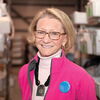Training budding scientists: Federal funding boosts Maine’s science and technology workforce
Voot Yin knows the look. That first Eureka! moment in a fledgling scientist's eyes is so tantalizing he knows it will push them to achieve the feeling again and again.
“I know that type of experience, and the opportunity to really change the course of a person's life as it did for me,” says Yin, an assistant professor at MDI Biological Laboratory in Salisbury Cove. “When I see students come into my lab and achieve that moment, it's phenomenal.”
Yin's moment came during a summer internship at New England BioLabs Inc. What he originally regarded as a chance for summer employment changed the outlook for his future. At the lab he performed molecular biology, taking fragments of genes from one organism and putting them into another.
“This was totally foreign to me that you could do this, but to me it was a highly addictive drug, because it really opened up my eyes in terms of what you can do in science, the types of questions you can ask and ultimately try to answer,” Yin says.
Ultimately, Yin believes science will be the catalyst for change in Maine's economy and workforce training, but says resources must be committed to it with a long-term vision.
Several federally funded programs in Maine aim to do just that. INBRE, for the IDeA Network of Biomedical Research Excellence, is funded by the National Institutes of Health. It was created in 2001 to develop research resources and modern labs that in turn will attract both established investigators and develop and enhance the research skills of students. IDeA stands for Institutional Development Award. Another is EPSCoR, the Experimental Program to Stimulate Competitive Research, established by the National Science Foundation in 1978 for states like Maine that typically receive small amounts of federal R&D funding. Last year, Maine ranked 45th nationally in R&D investment.
Regenerating science
Yin says INBRE funding was a key part of the job package that enticed him from his postdoctoral work at Duke University to MDIBL. “It allowed me to have the funds to obtain the necessary equipment and hire the necessary people to jumpstart my research program,” he says. “A lot of people I hired were from the state.”
One of his INBRE students had no research experience. She worked at a humane society in Bangor, but he saw something in her application and work ethic that made him take a chance on her.
“She does phenomenal work,” he says. “She was and still is a major catalyst for some of the programs I've initiated to run the company I've formed called Novo Biosciences,” a regenerative medicine company.
INBRE funds both hands-on labs and research fellowships and pays for some infrastructure and equipment, notes Patricia Hand, vice president of administration and principal investigator of Maine INBRE, which is run out of MDIBL. INBRE is a collaborative network of 11 Maine research institutions and colleges and two outreach institutions.
“Of the 718 Maine INBRE undergraduate students who had participated in INBRE since 2001 and graduated, 112, or 16%, were pursuing science- and health-related careers in Maine,” Hand says of the students they tracked. “As of 2013 they were practicing physicians, working at research institutions, or were graduate students in biomedical fields at the University of Maine and the University of New England.”
The $18.4 million grant the program received last fall will allow for another 800 students to be trained over the next five years, she says. About half of it will be shared with the other INBRE institutions in Maine.
“Even if [students] don't pursue a science career, they get the idea of the work world, teamwork and communication,” says Hand. “They can become part of an educated workforce and get the critical life skills we need.”
Students typically start with a one- to two-week short course to learn basic research skills, she says. That is often followed by summer research or academic year fellowships.
“They work closely with scientists, so they can get informal career counseling,” she says. “Some students learn best lab practices and state-of-the-art lab techniques and learn what a lab research career is all about. It gives them a tremendous amount of confidence. It can help them decide what they want to do.”
Finding your place
That was the case with Yuka Takemon, a College of the Atlantic graduate who now is a research assistant at the nearby The Jackson Laboratory in Bar Harbor. Originally from Japan, she took advantage of the same federally funded program as Yin during her studies at COA.
Takemon took the INBRE short two-week course, plus did a summer fellowship and had two full academic year fellowships at MDIBL.
When she started at COA she wanted to be a marine biologist. But the exposure through INBRE to what research is like, and that it can eventually benefit human health, helped her realize that laboratory research was in her future.
Takemon realizes all too well that repeating experiments again and again and not getting the desired results can be tedious. “That's when it really helps having a good mentor,” she says. “Their enthusiasm is contagious.”
Casey Jacob Acklin, who will graduate from COA in June with a focus on human ecology, had a similar experience after taking the INBRE short course and then academic year fellowships.
“It reinforced my desire to work in the lab,” he says. He has an internship at Jackson Lab as well, and hopes to apply for a research assistant position there.
“INBRE prepares you to enter into a real job instead of having to get the extra training after graduation,” he says. One particularly helpful skill was learning polymerase chain reaction (PCR) techniques, which are used in molecular biology used to amplify small amounts of DNA into thousands or millions of copies for study. “I'll be using PCR in the jobs I'll be pursuing,” he says. “It's essential for me to enter a lab knowing these skills.”
Science from K–college
Outside the lab, largely taking place in the field, for example along the banks of the Saco River, EPSCoR offers learning programs to a broader age group.
Maine became an EPSCoR state in 1980. “Since then, more than $97 million has been used to expand our research capacity as a state,” says Laurie Bragg, outreach and program manager for the program, which is anchored at the University of Maine in Orono. From 2009-15, more than 100 faculty and 752 high school, undergraduate and graduate students have taken advantage of the program, which is largely hands-on field work. She expects about 5,000 students, from kindergarten through high school, to participate in the program annually over the next five years.
“You can scale this to kindergarten,” she says. “We have a tool kit for kindergarteners on how a scientist investigates a problem, for example, looking at the invasive emerald ash borer beetle and why it is bad for the environment. We want to pique their curiosity.”
EPSCoR is trying to teach students data collection skills as part of an education in science, technology, engineering and mathematics.
“We want to build capacity to build a larger STEM workforce in Maine. We need scientists and consumers of science,” Bragg says. “You need science just to operate your cell phone.”
A Vimeo video last year made last year by UMaine about EPSCoR's economic impact noted that the program aims to use the state as a living lab for research. UMaine's Advanced Structures & Composites Center, for example, was established in Orono in 1996 with an EPSCoR grant. From that time until now, center Director Habib Dagher said on the video, the staff has grown from five faculty to 200 faculty, staff and students, and an 83,000-square-foot lab now stands where there was no lab.
The center has attracted more than $100 million in research and development funds into Maine through 300 contracts with industry in the United States and beyond, Dagher said, adding that UMaine now is a world leader in bringing deep-water offshore wind technology into Maine, along with advancing composite technology. He said developments in the lab have led to more than 25 patents.
EPSCoR includes the University of Maine campuses at Fort Kent, Presque Isle, Orono, Augusta and Farmington, as well as the University of Southern Maine; Unity College; College of the Atlantic; Bates College; Bowdoin College; and the University of New England.
Cassandra Smith, who was involved in the Saco River project in 2012, studied the history and evolution of land use on the Saco River. She graduated from the University of New England in 2013 with a degree in environmental studies and a minor in geographic information systems. She used GIS heavily in the EPSCoR project to gather data, and now applies it in her job as a GIS specialist at the engineering firm Hatch Mott MacDonald in Holyoke, Mass.
She credits the experience at EPSCoR with helping her get the job. “That experience was valuable for interpersonal skills and team effort. I shared results with other students, faculty and staff, plus attended symposia,” she says. “I was able to apply what I learned.”
Shane Murphy, an environmental science graduate in this year's UNE class, also worked on the Saco River project last year, which was the final year of that EPSCoR grant. “I learned a lot of different skills to put on resumes, like using the Trimble GPS and working with graduate students on nitrogen studies in the river,” he says. He was paid $10 an hour for his work while on the grant. But most of all, he enjoyed doing bird surveys, and is looking to apply to graduate schools in the fall and focus on wildlife biology.
MDIBL's Yin says that students in such programs don't have to get a doctorate or train for 10 more years to run their own lab. “If you think about it, the idea of being able to think creatively and integrate information from a number of different resources, and being responsible, diligent and being able to communicate your ideas to other people are all skills that transcend science. They're applicable in journalism, in sales, in practically any discipline,” he says.
One of the downsides in Maine, however, is that there are not enough jobs for the people who do gain the skills.
“INBRE creates the opportunity in Maine to get exposure in the STEM fields, but there are no jobs here for people to apply to,” says Takemon of Jackson Lab.
One suggestion: “It would be nice, as a potential draw to keep students, to have students in INBRE work in an institution in Maine and get reimbursed for student loans,” says Takemon, noting she actually doesn't have student loans, though others she knows do. “Now they have to go to the big city to pay off loans.”
Read more
Bar Harbor startup incubator nets $1.5M grant













Comments